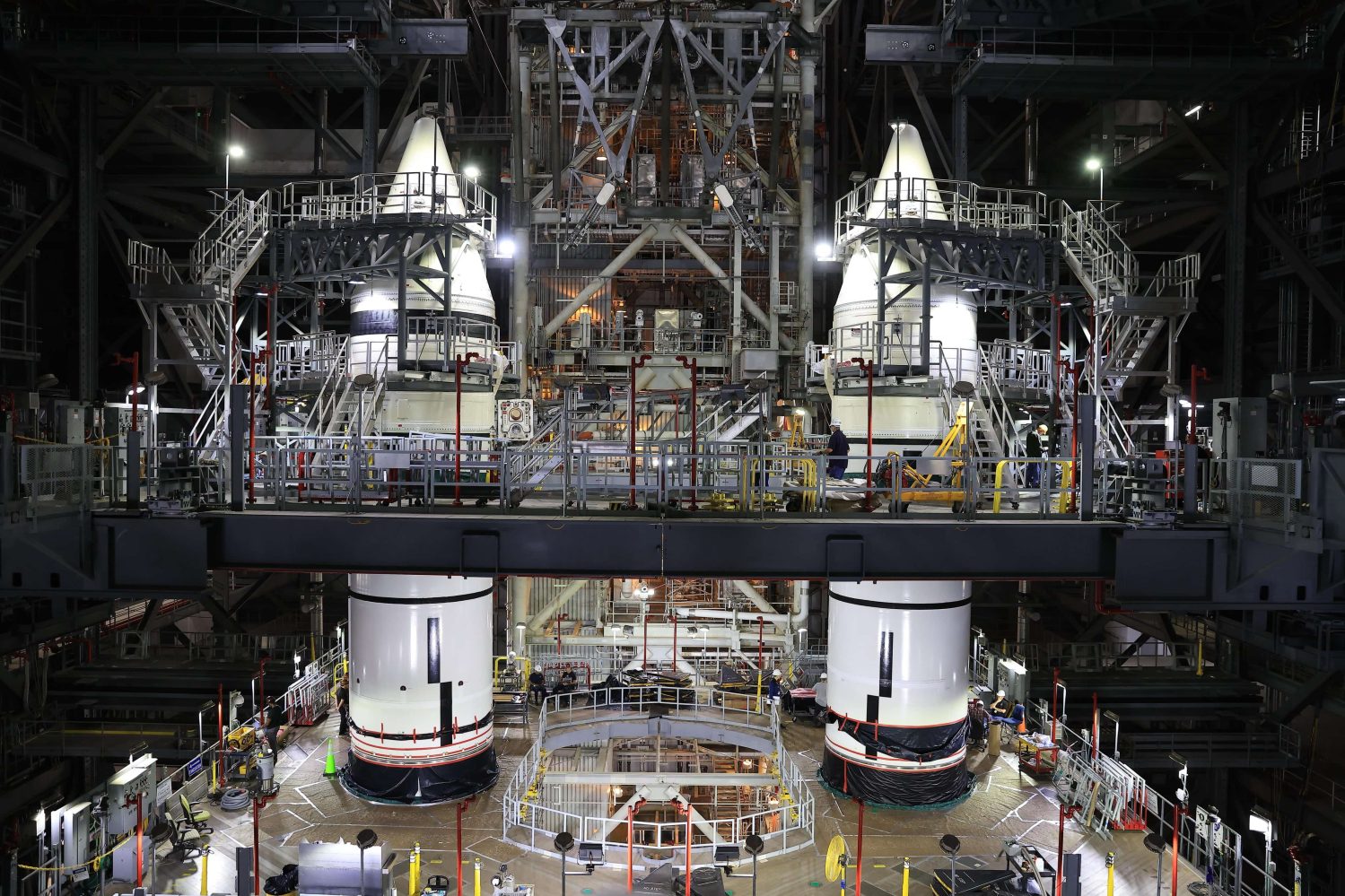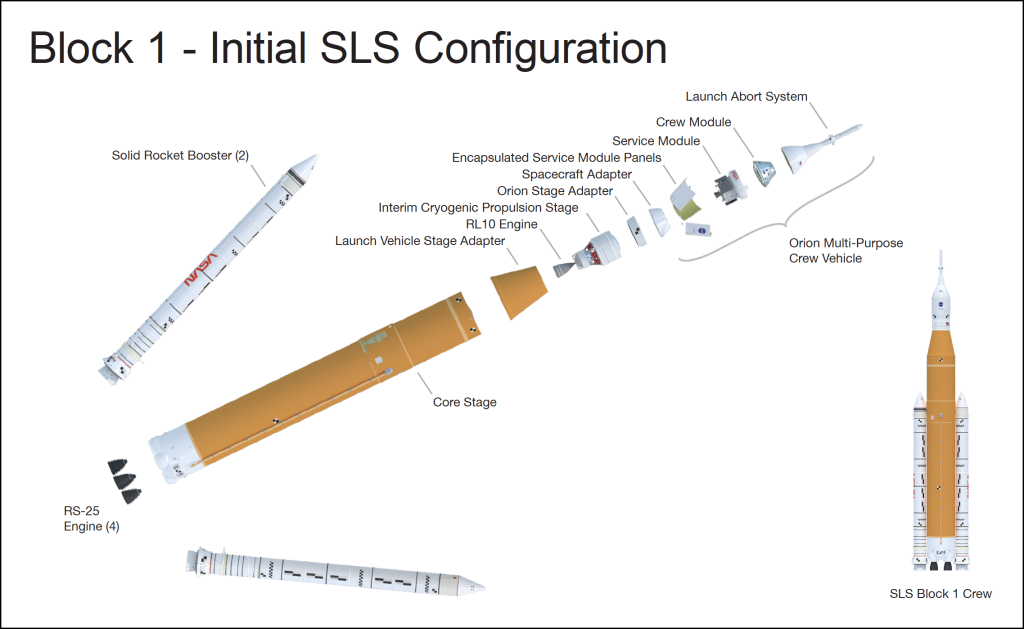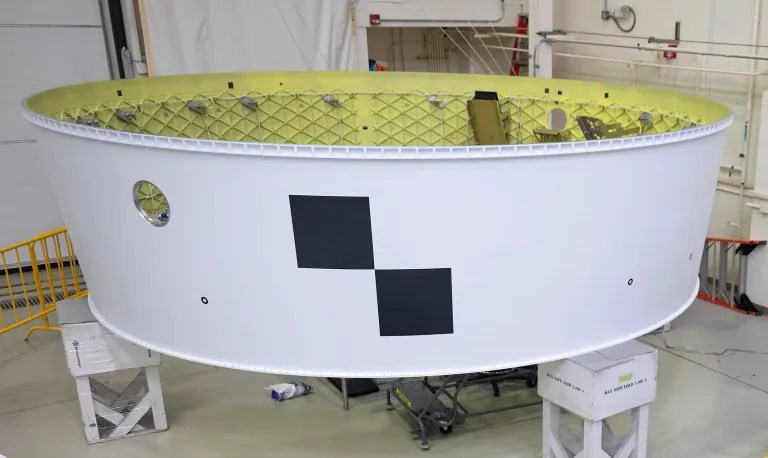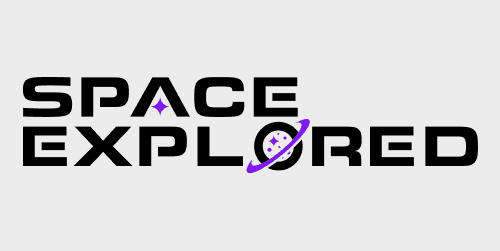
Yesterday, NASA’s Exploration Ground System (EGS) completed stacking the final component for Artemis 2’s SLS boosters, including the nosecone. This marks the completion of stacking the two Solid Rocket Boosters, which will provide most of the thrust to lift the Artemis 2 crew off the pad.
Next On The To-Do List
Next on the agenda, EGS will lift the Artemis 2 core stage from its work stand in Highbay 2. It will then be moved across the transfer aisle to Highbay 3, where it will be stacked between the two boosters. After that, EGS will proceed to stack the Launch Vehicle Stage Adapter (LVSA), a conical section that houses the Interim Cryogenic Propulsion Stage (ICPS).

Following this, NASA will begin testing the integrated vehicle to ensure that the core stage communicates with the ICPS and vice versa. Additionally, umbilical retract testing will be performed if necessary. NASA will then prepare the “short stack” rocket for its rollout to LC-39B. The goal is for SLS to complete a Wet Dress Rehearsal (WDR) before rolling back to the Vehicle Assembly Building. Once back in the VAB, NASA will stack the Orion Spacecraft and complete final checks and tests. Finally, EGS will add the Flight Termination System and roll the vehicle out to the pad for what is hoped to be the final time.
If Orion is ready when the ICPS stacking is completed, EGS could stack Orion at that point. However, this is unlikely, as NASA has many remaining milestones. SLS stacking is expected to finish by or before May, which leaves little time for Orion’s preparation.
Orion must first have its service module fueled, followed by the addition of its service module fairings. Afterward, Orion will need to be moved to another facility for the stacking of its Launch Abort System fairings and motor. Once all this is complete, Orion will be ready for handover to EGS for stacking. This is a tight timeline and leaves little room if NASA chooses this option.
Considerations Before Stacking and Integration
Before stacking the final portions of the rocket, NASA must consider several critical factors. A key consideration is the Orion Spacecraft Adapter. This component provides a structural and aerodynamic connection between the ICPS and Orion. It also houses a deployment mechanism for several cubesats. Once the Orion Spacecraft Adapter is stacked, the cubesats will be left to deploy after launch, as NASA will not have access to them after stacking.
For Artemis 1, NASA stacked the Orion Spacecraft Adapter with its cubesats on October 8th, 2021. The launch occurred on November 16th, 2022, a full 13 months later. The long delay between cubesat integration and deployment was blamed for some cubesats not functioning properly after launch.

Another important consideration is the addition of the Flight Termination System to the rocket. The system’s batteries are certified for only 25 days. Once added, NASA will have 25 days to roll the rocket to the pad, verify its readiness, and launch. If this window is missed, the rocket must return to the Vehicle Assembly Building for battery retesting. After the batteries are verified, the rocket can be rolled back to the pad, but it will start another 25-day certification period.
NASA must be cautious of the ongoing process of certifying the systems involved. If any adjustments are needed during stacking or integration, it could result in additional delays to Artemis 2. Every step must be carefully coordinated to maintain NASA’s current launch date of April 2026.
FTC: We use income earning auto affiliate links. More.




Comments